#fossilized nautilus
Explore tagged Tumblr posts
Photo

Cenoceras Fossil Nautilus - Jurassic, Beacon Limestone, UK | Genuine + COA
Authentic Cenoceras Fossil Nautilus – Beacon Limestone, Jurassic Period
This is a genuine Cenoceras fossil nautilus, carefully excavated from the Beacon Limestone Formation, a renowned Jurassic fossil site in Ilminster, Somerset, UK. Dating back to the Jurassic Period, approximately 174–168 million years ago, this beautifully preserved nautilus provides a fascinating glimpse into prehistoric marine life.
Guaranteed Authenticity: All of our fossils are 100% genuine and come with a Certificate of Authenticity. The specimen shown in the images is the exact fossil you will receive.
Fossil Information:
Scientific Name: Cenoceras sp.
Location: Ilminster, Somerset, UK
Formation: Beacon Limestone
Geological Age: Jurassic Period (~174–168 million years ago)
Discovered By: Alister & Alison (Our Expert Fossil Hunting Team)
Discovery Date: 02 October 2024
Preparation: Expertly cleaned, prepped, and treated by Alison to enhance preservation and detail
Size & Presentation:
Scale cube = 1cm (see photos for accurate sizing)
Specimen dimensions provided in listing images
Perfect for: ✔ Fossil Enthusiasts & Collectors ✔ Educational Use & Teaching ✔ Unique Gifts for Paleontology Lovers ✔ Museum & Display Collections ✔ Natural History Exploration
Own a rare and beautifully preserved piece of Earth’s prehistoric marine history today! Fast & Secure Shipping Available.
#Cenoceras fossil#nautilus fossil#Jurassic fossil#Beacon Limestone#Ilminster fossil#Somerset fossil#UK fossils#prehistoric marine life#fossilized nautilus#genuine fossil#natural history#paleontology#collectible fossil#rare fossil specimen#nautilus collector#museum quality fossil#geological wonder#cephalopod fossil
0 notes
Text
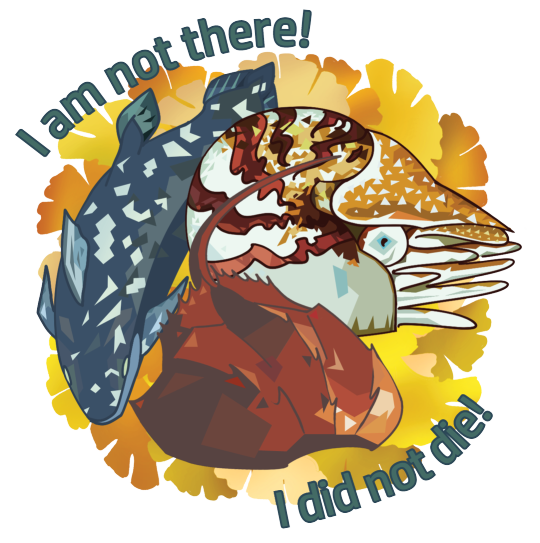
#artists on tumblr#art#illustration#artwork#myart#original art#digital art#marine biology#coelacanth#marine life#nautilus#living fossils#animals#ginkgo#fish#oceancore#ocean life#I'd say this has a paleontology vibe#but they're all still alive#... which is kind of the point#Text credit to “Do not stand at my grave and weep”#By Clare Harner
4K notes
·
View notes
Text

Living Fossils - Creatures that remain seemingly unchanged by time. Here's the Coelacanth, the Sturgeon, the Gar, the Horseshoe Crab and the Nautilus! (Gouache on 50x40cm canvas, SOLD)
#living fossils#marine biology#sea life#fish#coelacanth#sturgeon#gar#horseshoe crab#nautilus#sea creatures#marine life#gouache#traditional art#my art
12K notes
·
View notes
Text
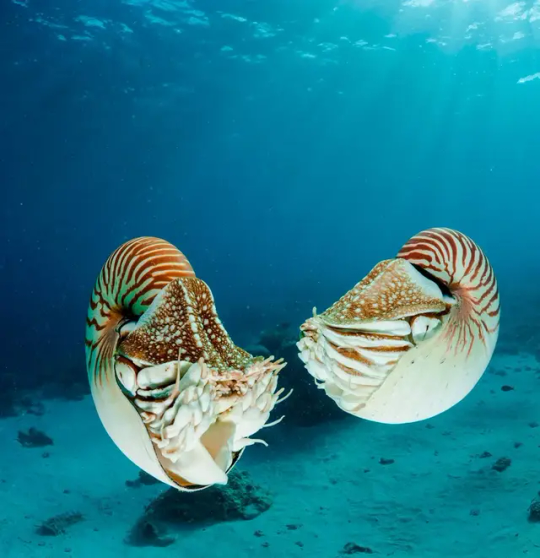

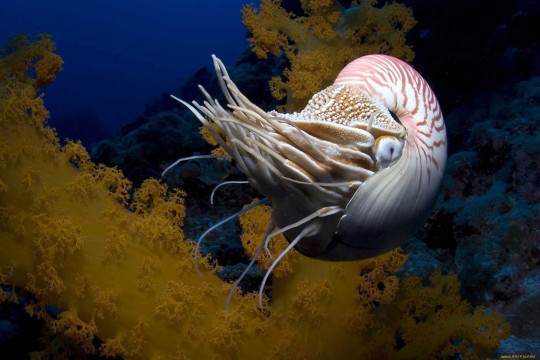
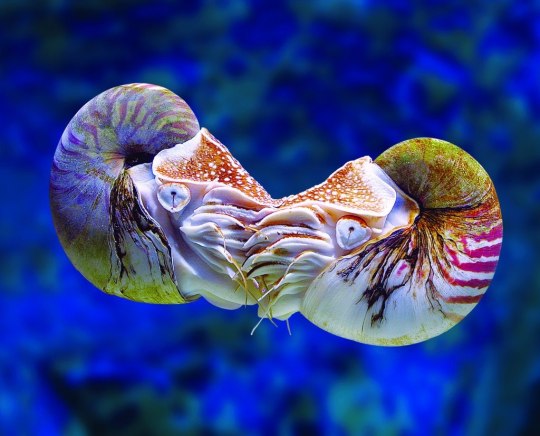
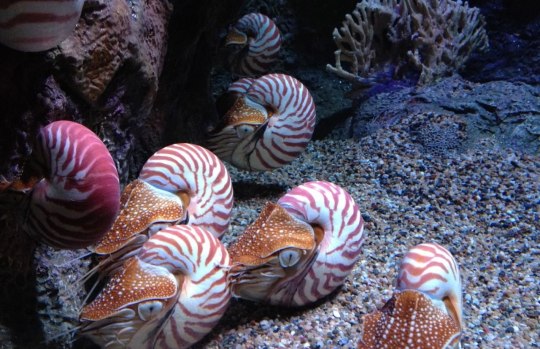
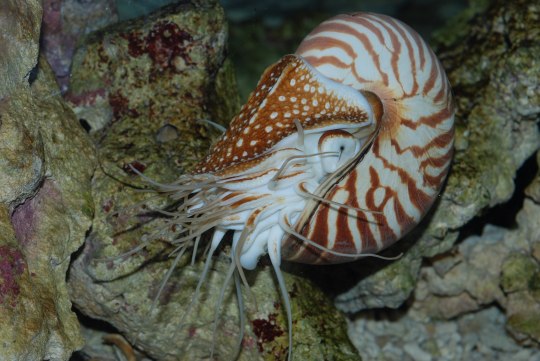
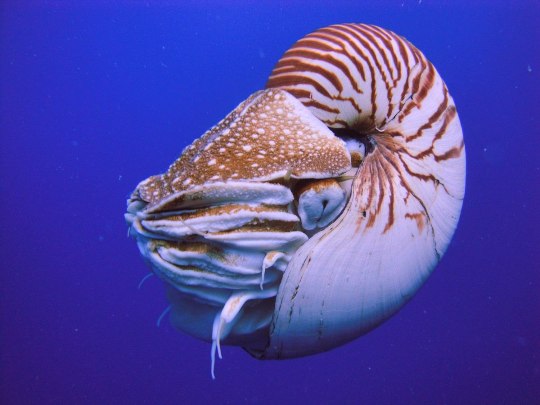
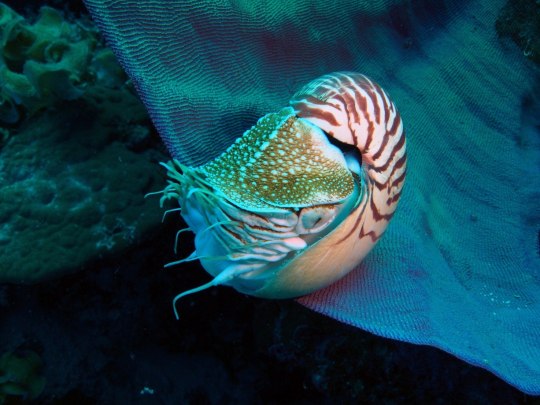




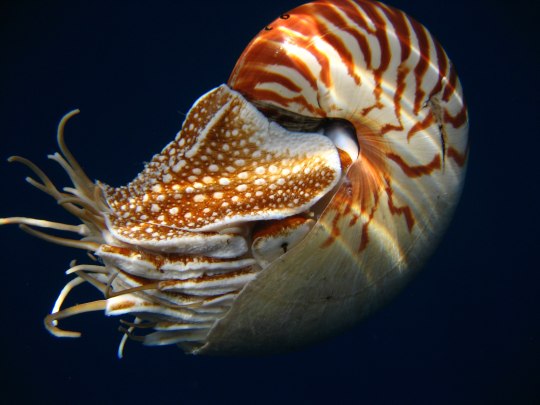
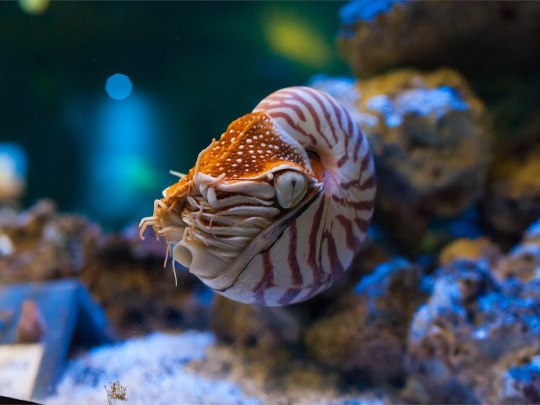
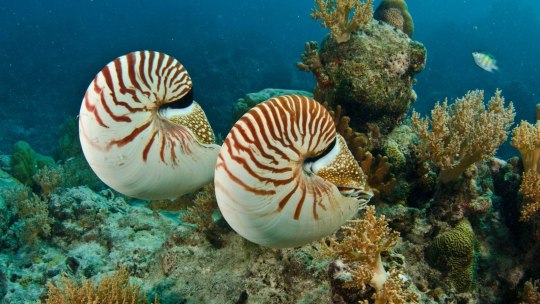
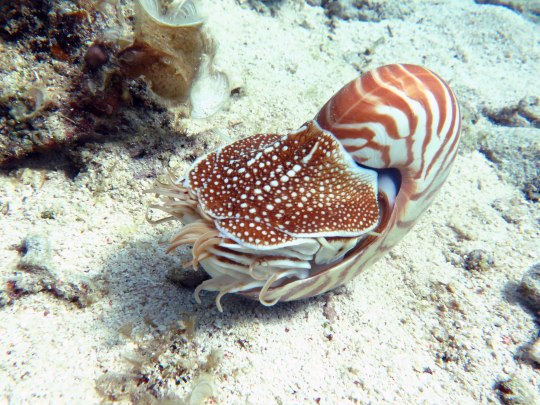
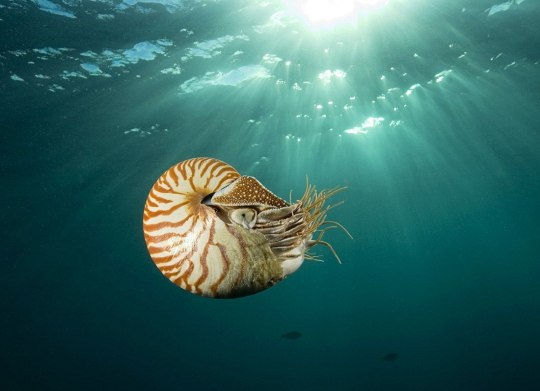

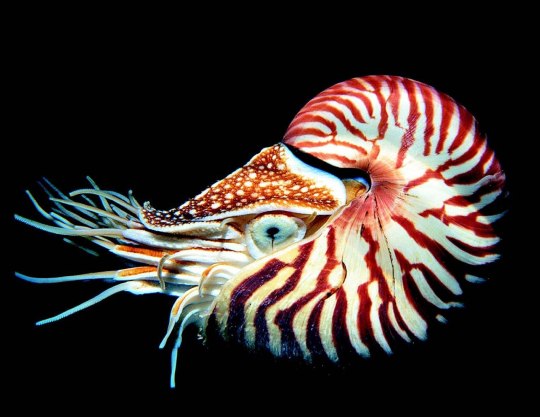

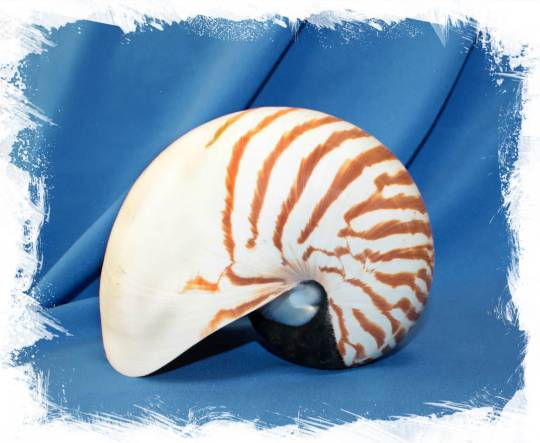
Наутилус (лат. Nautilus) — род головоногих моллюсков, которых относят к «живым ископаемым». Самый распространенный вид — Nautilus pompilius. Наутилусы относятся к единственному современному роду подкласса наутилоидей. Первые представители наутилоидей появились в кембрии, а его развитие пришлось на палеозой. Наутилиды почти вымерли на границе триаса и юры, но все же дожили до наших дней, в отличие от своих родственников аммонитов. Некоторые виды древних наутилусов достигали размера в 3,5 м. Представители самого крупного вида современных наутилусов достигают максимального размера в 25 см.
Спиральный «домик» моллюска состоит из 38 камер и «построен» по сложному математическому принципу (закон логарифмической прогрессии). Все камеры, кроме последней и самой большой, где размещается тело наутилуса с девятью десятками «ног», соединяются через отверстия между собой сифоном. Раковина наутилуса двухслойная: верхний (наружный) слой – фарфоровидный – действительно напоминает хрупкий фарфор, а внутренний, с перламутровым блеском – перламутровый. «Домик» наутилуса растет вместе с хозяином, который перемещается по мере роста раковины в камеру попросторней. Пустое жилище моллюска после его гибели можно встретить далеко от его места обитания – после гибели «хозяина» их раковины остаются на плаву и перемещаются по воле волн, ветров и течений.
Интересно, что двигается наутилус «в слепую», задом наперед, не видя и не представляя препятствий, которые могут оказаться на его пути.И еще одно удивительное качество этих древних обитателей Земли – у них потрясающая регенерация: буквально через несколько часов раны на их телах затягиваются, а в случае потери щупальца быстро отрастает новое.
Nautilus is a genus of cephalopods, which are classified as "living fossils". The most common species is Nautilus pompilius. Nautilus belong to the only modern genus of the Nautiloid subclass. The first representatives of the Nautiloids appeared in the Cambrian, and its development took place during the Paleozoic. The Nautilids almost died out on the border of the Triassic and Jurassic, but still survived to the present day, unlike their Ammonite relatives. Some species of ancient Nautilus reached a size of 3.5 m. Representatives of the largest species of modern nautilus reach a maximum size of 25 cm.
The spiral "house" of the mollusk consists of 38 chambers and is "built" according to a complex mathematical principle (the law of logarithmic progression). All chambers, except the last and largest, where the nautilus body with nine dozen "legs" is located, are connected through holes with a siphon. The nautilus shell is two–layered: the upper (outer) layer – porcelain–like - really resembles fragile porcelain, and the inner, with a mother-of-pearl luster - mother-of-pearl. The nautilus's "house" grows with its owner, who moves as the shell grows into a larger chamber. The empty dwelling of a mollusk after its death can be found far from its habitat – after the death of the "owner", their shells remain afloat and move at the will of waves, winds and currents.
Interestingly, the Nautilus moves "blindly", backwards, without seeing or imagining the obstacles that may be in its path.And another amazing quality of these ancient inhabitants of the Earth is that they have amazing regeneration: in just a few hours, the wounds on their bodies heal, and in case of loss of tentacles, a new one grows quickly.
Источник:://t.me/+t0G9OYaBjn9kNTBi, /sevaquarium.ru/nautilus/, /habr.com/ru/articles/369547/, //wallpapers.com/nautilus, poknok.art/6613-nautilus-molljusk.html, //wildfauna.ru/nautilus-pompilius, /www.artfile.ru/i.php?i=536090.
#fauna#video#animal video#marine life#marine biology#nature#aquatic animals#cephalopods#Nautilus#nautilus pompilius#living fossils#ocean#benthic#coral#plankton#beautiful#animal photography#nature aesthetic#видео#фауна#природнаякрасота#природа#океан#бентосные#головоногие моллюски#Наутилус#живое ископаемое#коралл#планктон
187 notes
·
View notes
Text

Nautiloid fossil in Carlsbad Caverns, New Mexico. By Carlsbad Caverns on Flickr. (Hi-Res).
#fossil#fossils#nautilus#nautiloid#carlsbad caverns#new mexico#national park#national parks#america#u.s.a.#geology#nature
17 notes
·
View notes
Text
🐙Daily Cephalopod Fact:🐙
Chambered Nautilus: The nautilus is an octopus’ cousin. It has more than 90 tentacles — the most of any cephalopod — which it uses to feel and grope along the reefs for food. Unlike those of other cephalopods, a nautilus’s tentacles have grooves and ridges instead of suckers. The nautilus is the only cephalopod with an external shell. Much like zebras, nautiluses can be individually identified based on their striped shell patterns.

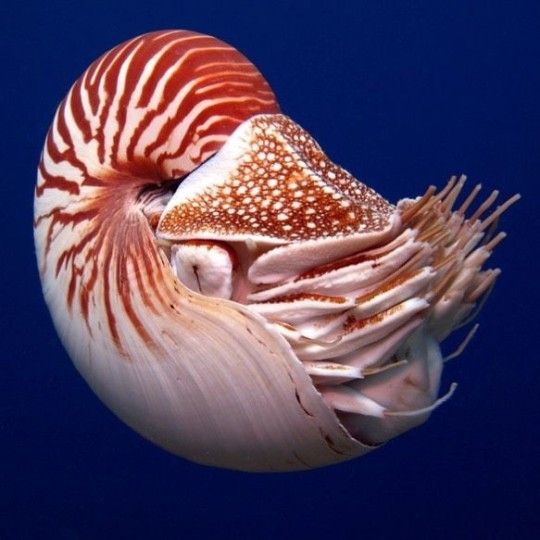
#chambered nautilus#nautilus#octopus cousin#living fossil#respect the locals#cephalopod#daily cephalopod#daily cephalopod fact#cephalopod facts#facts about cephalopods#marine#marine animals#marine biology#marine life#ocean#ocean life#shark blog
125 notes
·
View notes
Text
#2776 - Aturia sp.

A genus of Nautiloid that hung around from after the K-T mass extinction until the end of the Miocene, over 60 million years later. They didn't leave any living descendants.
Many of the fossils have been found in shallow-water sedimentary deposits, but that doesn't mean much - as with their relatives the Nautilus, dead Aturia would float around supported by the gas inside their shell chambers, until they wash ashore. However, one extraordinary fossil site has over 500 Aturia fossils, including some newly hatched, and it was an oxygen-depleted habitat. Oxygen-isotope analysis of the fossils proved they lived at that depth for their entire lives. Like Nautilus, it would appear Aturia could tolerate low oxygen levels - unlike Nautilus, juveniles lived in the same habitat as their parents.
University of Otago Geology Museum, Dunedin, Aotearoa NZ.
#Aturiidae#Aturia#Nautilus#Nautiloid#University of Otago Geology Museum#Dunedin#Dunedin NZ#new zealand fossil#fossil
8 notes
·
View notes
Text
Early Silurian of south western Poland

#biology#palaeoart#fossils#geology#paleoart#sciart#science#palaeontology#paleozoic#paleontology#silurian period#nautilus#brachiopods#crinoid#orthoceras#endoceras#Lschnacanthiformes#Platystrophia#Baltocrinus#cephalopod
18 notes
·
View notes
Text
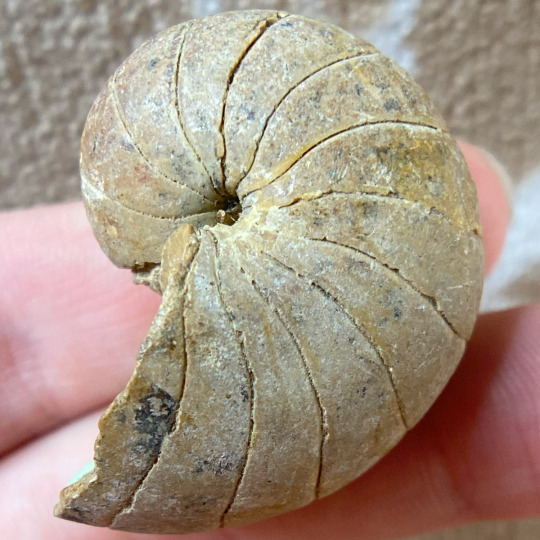
A fossilized Cretaceous aged nautilus of a Nautilus sp. from the Ariyalur Beds in Pondicherry, India. Unlike the similar looking ammonites, these shelled cephalopods survived the K-Pg extinction at the end of the Cretaceous and survive to the modern day. Contrary to popular belief, nautiloids are not closely related to ammonites in particular other than both being cephalopods like squids and octopi.
#nautilus#nautiloid#cephalopod#fossils#paleontology#palaeontology#paleo#palaeo#cretaceous#mesozoic#prehistoric#science#paleoblr#ノーチラス#オウムガイ科#オウムガイ#化石#古生物学
4 notes
·
View notes
Photo

Cenoceras Fossil Nautilus - Jurassic, Beacon Limestone, UK | Genuine + COA
Authentic Cenoceras Fossil Nautilus – Beacon Limestone, Jurassic Period
This is a genuine Cenoceras fossil nautilus, carefully excavated from the Beacon Limestone Formation, a renowned Jurassic fossil site in Ilminster, Somerset, UK. Dating back to the Jurassic Period, approximately 174–168 million years ago, this beautifully preserved nautilus provides a fascinating glimpse into prehistoric marine life.
Guaranteed Authenticity: All of our fossils are 100% genuine and come with a Certificate of Authenticity. The specimen shown in the images is the exact fossil you will receive.
Fossil Information:
Scientific Name: Cenoceras sp.
Location: Ilminster, Somerset, UK
Formation: Beacon Limestone
Geological Age: Jurassic Period (~174–168 million years ago)
Discovered By: Alister & Alison (Our Expert Fossil Hunting Team)
Discovery Date: 02 October 2024
Preparation: Expertly cleaned, prepped, and treated by Alison to enhance preservation and detail
Size & Presentation:
Scale cube = 1cm (see photos for accurate sizing)
Specimen dimensions provided in listing images
Perfect for: ✔ Fossil Enthusiasts & Collectors ✔ Educational Use & Teaching ✔ Unique Gifts for Paleontology Lovers ✔ Museum & Display Collections ✔ Natural History Exploration
Own a rare and beautifully preserved piece of Earth’s prehistoric marine history today! Fast & Secure Shipping Available.
#Cenoceras fossil#nautilus fossil#Jurassic fossil#Beacon Limestone#Ilminster fossil#Somerset fossil#UK fossils#prehistoric marine life#fossilized nautilus#genuine fossil#natural history#paleontology#collectible fossil#rare fossil specimen#nautilus collector#museum quality fossil#geological wonder#cephalopod fossil
1 note
·
View note
Text
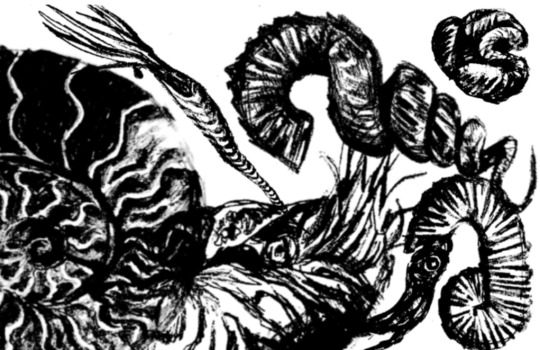
whatever. go my ammonites
#dear whomever points out the fact that there's a tiger nautilus in there. i'm a fraud i know. can i kiss you please.#aquatic#ocean#ammonite#cephalopod#fossils#prehistoric#meat tasting sky#wolframmidnights#fish
3 notes
·
View notes
Text

Vintage real nautilus half shell multistrand beaded necklace
#vintage#vintage goods#vintage jewelry#costume jewelry#nautilus#necklace#shell#jewelry#btw nautilus shells are not something you should buy new#vintage is okay because it's already out there but ammonite fossils are a much better choice in terms of environmental and ethical concerns
5 notes
·
View notes
Text

Kapow!
#art#drawing#illustration#nautilus#sona#anthro#anthropomorphic#anthro nautilus#marine biology#living fossil#my art#my artwork#artists on tumblr#ocean life#drpumpkins#drpumpkins art
30 notes
·
View notes
Note

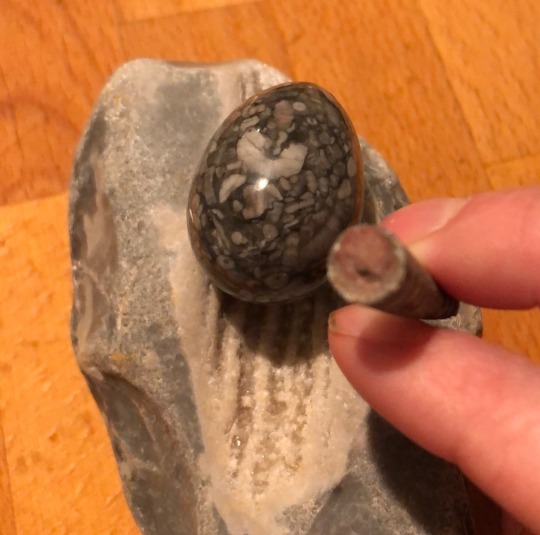
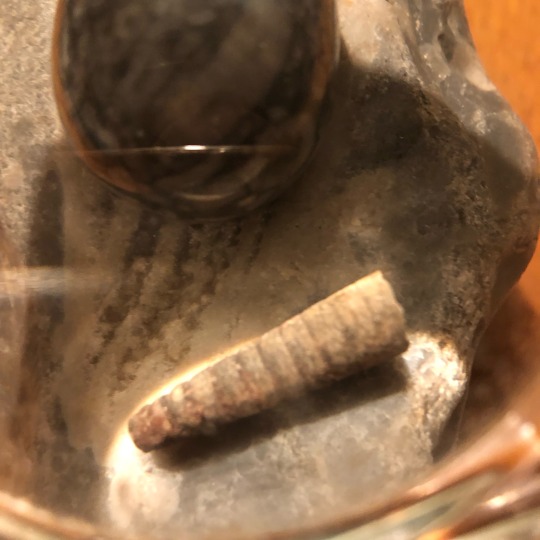

Hello, i have an ask from the pics. Are these an Crinoid stem ?

These are little ones from the kids activity to dig and search sets from those Dinosaur parks / museum bags. Likely all shells & sponge right?
Hi! :D
So I'm gonna start by saying, I am most definitely an amateur, haha, so my word is not 100% certain, but,, I think I may have some news for you!
The segments in those pieces do resemble some Crinoid stems and columnals I've seen, but I've never seen a stem that varies in diameter like those. Yeah, it could be erosion, but the fact that it is all of them, the same precise, cone shape is a little suspicious!
But guess what else is segmented! Nautiloid shells! and guess who evolved straight shells quite a few times! Nautilods!! I believe what those are is Orthocones! (straight, long, shells of Nautiloid Cephalopods) (a squid-like animal, with a shell) They were around from late Cambrian to the late Triassic:) And in size, they range from less than 25 millimeters to over 5 meters!
Here is an example of an Orthocone!

looks pretty similar to yours, do you think?
That is so awesome, friend! Yeah, Crinoids are awesome too, but you definitely do have some of those in that polished egg (It's so pretty)
Also check out this huge one!
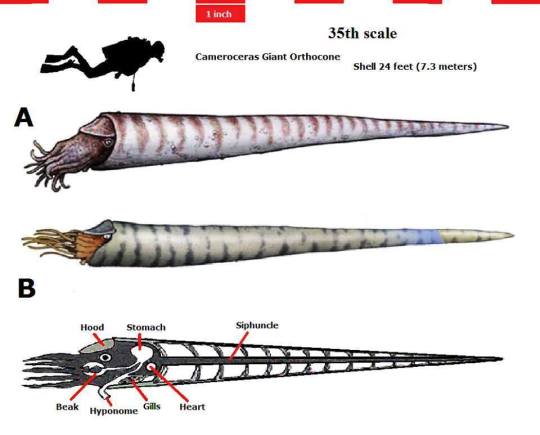

also yeah, the stuff from the museums and kits looks like shells and sponges to me, but again, im not a professional :) and I mostly know brachiopods haha
Thanks for showing me your cool fossils! They are lovely, I can imagine that joy you felt when you found them! Isn't fossil hunting the best thing ever!?! :) You're blog is inspiring me so post more of my fossils!
Oh, and if you want, give your Orthocones a little kiss for me! (I love to give my fossils a little peck, pretty cool to be able to kiss something that's millions of years old, right?)
#orthocone#nautiloid#cephalopod#fossils#ask:)#fossil#fossil collecting#paleontology#fossil hunting#nautilus#nautiloid fossil#cephalopod fossil#amateur paleontology#orthocone fossil#crinoids#crinoid
8 notes
·
View notes
Text










Balmain Fall 2024 Ready to Wear
#fashion#high fashion#black model#balmain#black woman#couture#black dress#flower dress#fossils#Fossil dress#nautilus#boquet#Leather#grapes
7 notes
·
View notes
Text
Sally’s Seashell Satchel 🐚



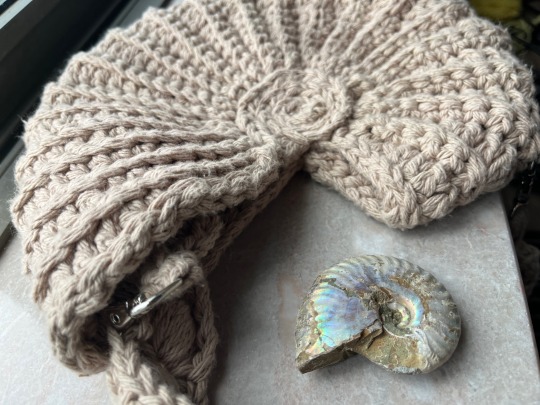
I may be a knitting Nurse Shark, but I thought it would be Shell-fish (I’m so sorry I had too) not to share this amazing summer pattern! I used doubled up cotton which nearly broke my fingers, but it’s worth it for the amazing shape it gives the shell. The video tutorials for these patterns are available on youtube so I will be link those, however if anyone knows of ravelry listings for them please let me know and I can link them too :)
See the Crochet seashell bag video tutorial and bag strap tutorial below!
youtube
youtube
7 notes
·
View notes